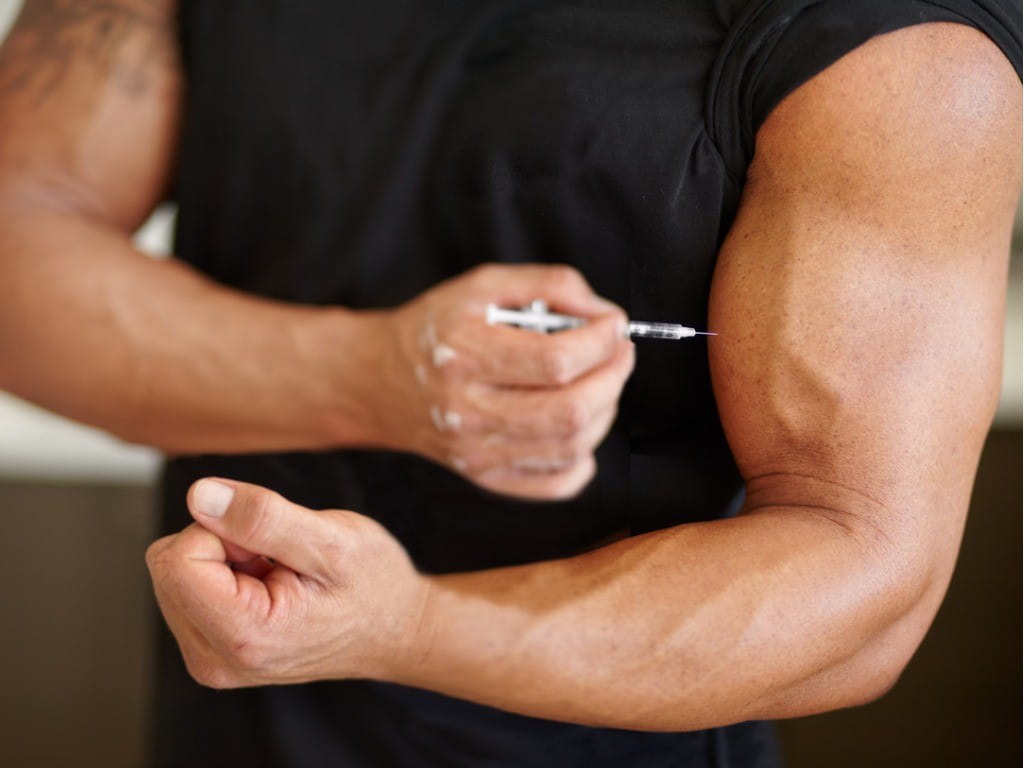Clenbuterol: Unapproved and Unsafe

The Bottom Line
Clenbuterol is a medication used to treat asthma and COPD in some countries, but it is not FDA-approved for human use in the United States. It is widely misused for possible anabolic and fat-burning effects, which have only been shown in animals. Clenbuterol causes toxicity at low doses. Symptoms include tremors, high heart rate, low blood potassium, seizures, and cardiac arrest.

Clenbuterol is a bronchodilator medication. It can open up (dilate) air passages in lungs that become narrowed and full of mucus due to asthma or COPD (chronic obstructive pulmonary disease). Before you ask your doctor about clenbuterol or decide to "Google" it on your computer, you should know that it's not FDA-approved for humans in the United States; it is only available here for use in livestock.
Clenbuterol Can Be Misused
Why should you keep on reading? Even without FDA approval, clenbuterol is still widely used by people in this country. It is best known for uses that are not medically approved and for side effects that are downright hazardous. People obtain it online under the nickname "Clen." Having some properties similar to anabolic steroids, clenbuterol is claimed to increase muscle mass and enhance weight loss, and may be used by bodybuilders and athletes to enhance their physical appearance. Unfortunately, studies that support these claims of desirable effects on muscle and fat have only involved livestock and experimental animals such as mice and rats. Studies in humans have not shown similar benefits. Just the same, people still use it and clenbuterol has been listed by the World Anti-Doping Agency (WADA) and the International Olympic Committee (IOC) as a performance-enhancing drug that is banned in competitive sports.
The risks of misusing a drug like clenbuterol include its lack of proven effectiveness and its hazardous side effects. Clenbuterol is well-known to cause symptoms such as rapid heart rate (tachycardia), palpitations, tremors, anxiety, lowered blood potassium (hypokalemia), and elevated blood sugar (hyperglycemia). Adverse effects happen more often with the large doses used for performance enhancement and weight loss. Because the drug has a long half-life in the body, toxic symptoms can last from 1 to 8 days. In one published report, over 80% of people who developed toxic effects required care in a hospital. The medical literature contains numerous reports of patients with symptoms ranging from agitation and rapid heart rate all the way to heart attack and cardiac arrest.
Other Hazards of Clenbuterol
Because clenbuterol is not approved for human use in the United States, there is no “standard” dose recommendation for this drug. Clenbuterol is approximately 100 times as potent as albuterol, a bronchodilator used to treat human asthma. Because of this, relatively small doses of clenbuterol can cause significant adverse effects in humans. Unlike anabolic steroids, clenbuterol is not a controlled substance. However, clenbuterol has been identified as an adulterant in street drugs such as heroin. After snorting or injecting heroin contaminated with clenbuterol, some patients have reported painful muscle spasms, agitation, and overactive reflexes. In 2005, the CDC reported 26 cases of clenbuterol poisoning among heroin users. They were hospitalized with symptoms such as rapid heart rate, palpitations, hypokalemia, chest pain, and agitation. Most were kept in the hospital for 5 days where they received intravenous fluids, potassium, and medications to slow down the heart. It is likely that many such cases go unreported because patients are afraid to seek medical care or health care providers might not recognize the symptoms of clenbuterol poisoning in illicit drug users.
Humans can also be poisoned by eating meat from animals given clenbuterol in their feed to promote weight gain and increase muscle mass. Both farmers and consumers of tainted meat have developed toxic symptoms associated with clenbuterol. Therefore, the United States and some European countries have made it illegal to add clenbuterol to animal feed.
Steps to Take in a Poisoning
Possible clenbuterol poisoning scenarios can involve substance abusers, bodybuilders, people trying to lose weight, people who were prescribed the drug in another country, and even small children who might unintentionally swallow some of an adult's supply. What should you do if you or someone you know could be experiencing toxicity from clenbuterol?
- First, try to determine how much clenbuterol was taken and why. If it's even slightly possible that someone took more than a usual single dose that would be given for asthma or COPD (about 40 mcg), the risk for troublesome effects is high and they should seek emergency help as soon as possible.
- At an emergency room, the person will be monitored for symptoms such as agitation, rapid heart rate, tremor, and abnormal blood potassium and glucose.
- Medications that might be used include intravenous fluids, sedatives for agitation, and beta-blocker drugs for tachycardia. If symptoms persist, hospitalization could be necessary for up to several days.
If you have questions about an adverse reaction or possible overdose of clenbuterol, immediately check the webPOISONCONTROL® online tool or call Poison Control at 1-800-222-1222 for help 24 hours a day, every day.
Leslie A. McCament-Mann, PhD, RPh
Clinical Toxicologist
Poisoned?
Call 1-800-222-1222 or
Prevention Tips
- Do not assume that drugs, medications, and supplements have been adequately tested for safety and effectiveness, unless they are FDA-approved for a particular use. Avoid buying and using unapproved products.
- Keep all medications in child-resistant containers and away from children and pets.
- Never transfer any medication, household cleaner, automotive product, pesticide, or other hazardous substance from its original package to a food container such as a cup or drinking glass.
This Really Happened
Case 1. Mistaking it for water, an 8-year-old boy drank an unknown amount of clenbuterol syrup that had been placed into a drinking cup prior to being given to a horse. The syrup contained 72.5 mcg/mL – this would deliver a toxic dose to the child if only one-third of a milliliter (mL) was swallowed. A mouthful of liquid in a child is estimated to be about 10 mL, which would deliver 30 times the toxic dose of clenbuterol with this product. The child arrived at an ER 1 hour after the exposure with vomiting and tachycardia (heart rate of 167 beats per minute). Over the next 2 days, he continued to have tachycardia and vomiting. He also developed hypokalemia, hyperglycemia, and an abnormal EKG (electrocardiogram). He was treated with intravenous fluids, potassium, and sedatives. When he was discharged 2 days after the ingestion, he still had tachycardia and mild EKG abnormalities that were improving.
Case 2. A 17-year-old girl swallowed 4 mg of clenbuterol, equivalent to 4000 micrograms (mcg). The usual adult dose for treating asthma is 40 mcg daily, so the girl took a hundred-fold dose at once. She was taking clenbuterol to lose weight. Within 20 minutes of swallowing it, she was perspiring and experiencing chest pain, anxiety, vomiting, and tachycardia (heart rate of 120). Her potassium was low and her EKG was abnormal. By day 3, she still had chest pain. Laboratory test results and the EKG showed that a myocardial infarction (heart attack) had occurred. She was treated with potassium, lorazepam (a sedative for anxiety), metoprolol (a beta-blocker drug to block clenbuterol), as well as nitroglycerin and morphine for chest pain. She was discharged from the hospital on day 5. She did not return for a scheduled follow-up appointment. (From Quinley et al., 2016)For More Information
References
Poisoned?
Call 1-800-222-1222 or
Prevention Tips
- Do not assume that drugs, medications, and supplements have been adequately tested for safety and effectiveness, unless they are FDA-approved for a particular use. Avoid buying and using unapproved products.
- Keep all medications in child-resistant containers and away from children and pets.
- Never transfer any medication, household cleaner, automotive product, pesticide, or other hazardous substance from its original package to a food container such as a cup or drinking glass.
This Really Happened
Case 1. Mistaking it for water, an 8-year-old boy drank an unknown amount of clenbuterol syrup that had been placed into a drinking cup prior to being given to a horse. The syrup contained 72.5 mcg/mL – this would deliver a toxic dose to the child if only one-third of a milliliter (mL) was swallowed. A mouthful of liquid in a child is estimated to be about 10 mL, which would deliver 30 times the toxic dose of clenbuterol with this product. The child arrived at an ER 1 hour after the exposure with vomiting and tachycardia (heart rate of 167 beats per minute). Over the next 2 days, he continued to have tachycardia and vomiting. He also developed hypokalemia, hyperglycemia, and an abnormal EKG (electrocardiogram). He was treated with intravenous fluids, potassium, and sedatives. When he was discharged 2 days after the ingestion, he still had tachycardia and mild EKG abnormalities that were improving.
Case 2. A 17-year-old girl swallowed 4 mg of clenbuterol, equivalent to 4000 micrograms (mcg). The usual adult dose for treating asthma is 40 mcg daily, so the girl took a hundred-fold dose at once. She was taking clenbuterol to lose weight. Within 20 minutes of swallowing it, she was perspiring and experiencing chest pain, anxiety, vomiting, and tachycardia (heart rate of 120). Her potassium was low and her EKG was abnormal. By day 3, she still had chest pain. Laboratory test results and the EKG showed that a myocardial infarction (heart attack) had occurred. She was treated with potassium, lorazepam (a sedative for anxiety), metoprolol (a beta-blocker drug to block clenbuterol), as well as nitroglycerin and morphine for chest pain. She was discharged from the hospital on day 5. She did not return for a scheduled follow-up appointment. (From Quinley et al., 2016)